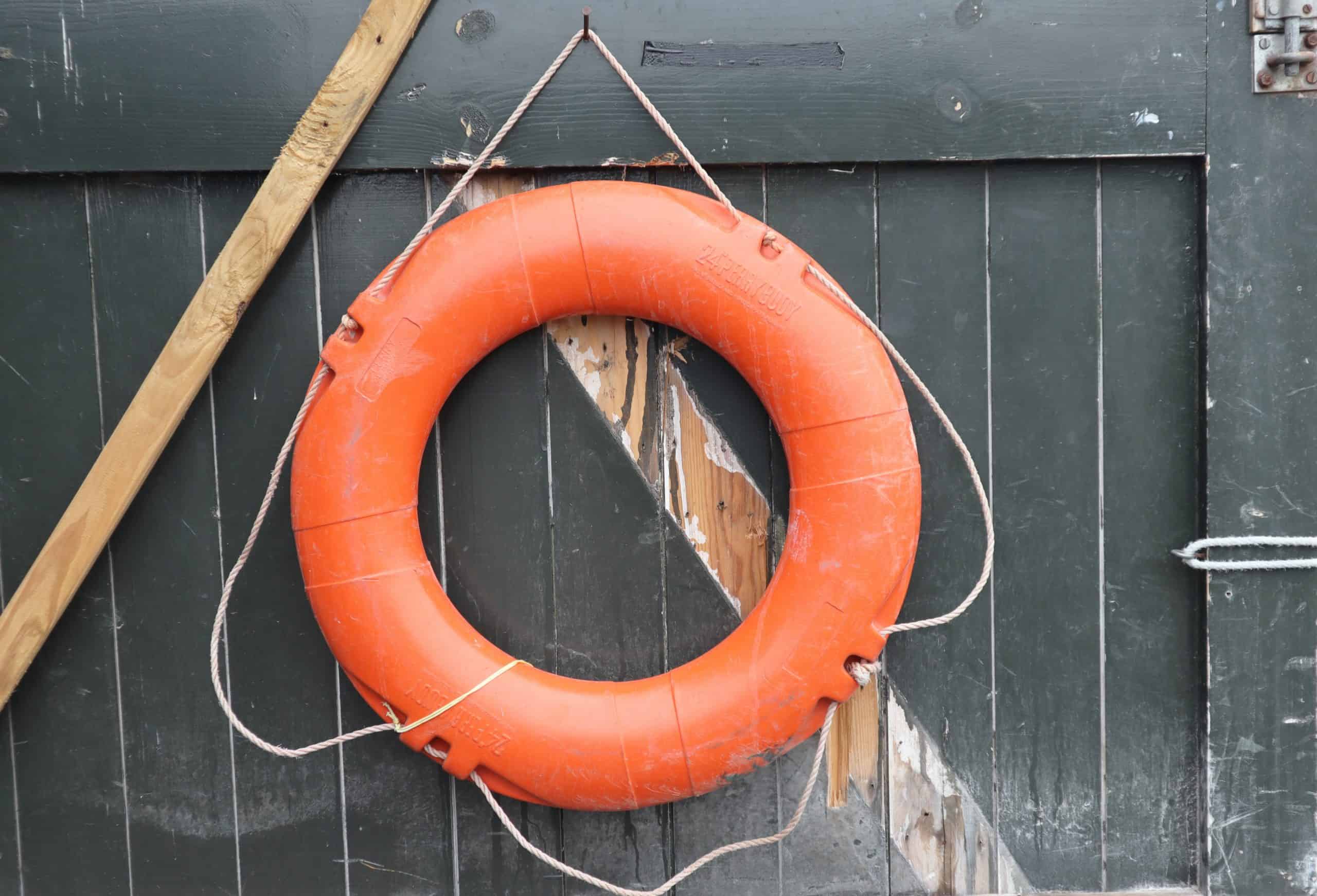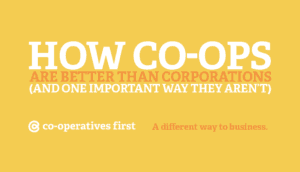When the economy takes a downturn, it’s hard on businesses — small to medium business (SMBs), in particular — and not every business survives. Co-operative businesses aren’t exempt from economic downturns. But research does show co-ops do better in a crisis. They also tend to be more resilient and last longer than other SMBs.
Why? Co-ops, like larger corporations, have a structure that can make them more stable. At the core of this structure is a major advantage: that a co-op is owned by its members.
Here are four reasons this structure means that co-ops do better in a crisis.
1. Members define the purpose of a co-op
Mondragon is an enormous company in the Basque region of Spain. It operates a number of manufacturing businesses and employs around 75,000 people. During the global financial crisis that started in 2008, its revenues took a hit like everyone else’s. Its response, though, wasn’t typical.
A typical response by a business in crisis is to lay off some or all of its workforce. At Mondragon, employees cut back their hours and gave up Christmas bonuses so the company could afford to keep everyone employed. Why? Mondragon is structured as a worker co-op. So, while its goal is to run a sustainable business, its purpose is to provide employment to its owners.
The profit from this business goes to employing its owners. So, finding a way to keep its owners employed was the business’ purpose during a crisis.
Co-ops are owned by their members. When members are employees, a delicate balance between sustaining the business and maintaining full employment takes place during a crisis. Most other businesses would cull their workforce to save costs in a downturn. But Mondragon prioritized keeping full employment and found cost savings elsewhere.
WHY THIS MATTERS
Mondragon highlights a feature that is true of all co-ops: a co-op’s purpose is defined by its members. Because of its co-operative ownership structure, finding cost savings in other areas than wages was a given rather than an anomaly for Mondragon.
Likewise, co-ops are often created to provide something members can’t get elsewhere. This feature increases loyalty and ensures the business is finely tuned to its market (ie: its members). This feature doesn’t mean there won’t be hard times. Nor does it mean a loss of revenue or difficult choices won’t be experienced by a co-op in crisis. But it does mean a co-op can often rely on support from its membership if it has been acting in the interest of its owners. Which brings us to…
2. Members often trust and remain loyal to co-ops
Another success story to come out of the 2008 financial crisis was credit unions. Compared to large banks, most of these co-operative financial institutions didn’t need government bailouts. In fact, during the crisis, credit unions saw increases in assets, deposits, volume of lending, and membership.
For example, in Manitoba 48 credit unions had increases in assets, loans, and deposits of 10% or more in 2008. Saskatchewan credit unions had a record year for net income and total assets, and BC broke records for earnings as well. Similar trends occurred across the United States and Europe.
These stats speak to the confidence people had in credit unions at a time when trust in financial institutions was low. In this case, the trust people have in the financial institution isn’t created through brand and loyalty programs. It comes from the organization’s structure.
WHY THIS MATTERS
Because credit unions answer to their members, they are motivated to act in the best interests of those member owners. The risk aversion inherent in this type of accountability protected most credit unions from high levels of risky loans.
In a paper exploring the resilience of co-ops, Birchall and Ketilson say credit unions are “more aware that the loan they offer to members is another member’s money”, and this influences the decisions they make. And many credit unions spend a lot of time thinking about how they communicate this difference to members — especially in the highly competitive world of financial services.
Do members understand the reasons credit unions were a less risky place to put their money? Hard to say. But they did seem to trust these institutions more than traditional banks during this crisis.
3. Members step up to support their co-ops
In the early 1980s, Maple Creek Co-op was in trouble. Thanks to some poorly timed expansion plans, this small-town consumer co-op had taken on big loans with high interest rates. Now the business needed an influx of funds to avoid bankruptcy.
To save the business, members invested around $250,000 into the co-op. This investment helped stabilize the business’ cashflow, and the co-op continued providing much-needed groceries, fuel, and agricultural products to people in the area.
Members also often provide a co-op with start-up capital. They do this by buying memberships, investment shares, or even offering loans. Besides core financial support, members often also put in volunteer hours to plan the business and get it up and running. So it’s not surprising that, if a co-op hits a rough patch, members work together to keep it going.
WHY THIS MATTERS
Bob Fink of UFA, in conversation with the Canadian Centre for the Study of Co-operatives at the University of Saskatchewan, explains how their membership investment program helped secure liquidity for the organization during the COVID-19 shutdown. In times of crisis, a core membership willing and able to provide liquidity can be a saving feature.
4. Co-ops can be members themselves
Some co-ops partner with other similar co-ops to leverage collective strength. In the same way members of these co-ops have leveraged the strength of individuals or businesses to create their own co-op, co-ops can work with other co-ops. This type of co-op is called a federation.
Co-operatives can form federations that provide each other further stability in times of crisis.
Western Canada’s best example of this type of co-op is the Co-operative Retailing System (CRS). The CRS is made up of retail co-ops across western Canada, and together they own Federated Co-operatives Limited (FCL). FCL provides wholesaling services, and also owns a profitable oil refinery. The result is a multi-billion dollar business with a reach that spans provinces, and employs thousands.
WHY THIS MATTERS
The whole is greater than the sum of its parts. In fact, FCL’s profits go back to the retail co-ops that own it, based on how much they purchased from FCL that year. This patronage payment provides an annual injection of cash that helps keep those local retails thriving. In fact, this cash keeps many small businesses afloat in western Canada’s rural areas — areas that otherwise wouldn’t be able to support a grocery store, for example.
Why it matters that co-ops do better in a crisis
These four features demonstrate the strength of the co-op model and why co-ops do better in a crisis. And they are part of the reason co-ops tend to last longer than other forms of small business.
What these features highlight is the reciprocity built into co-ops, because a co-op acts in the interests of the members. Co-ops need their members, and members depend on their co-ops.
Done right, this mutually beneficial system results in businesses with the stability to survive in times of crisis.




